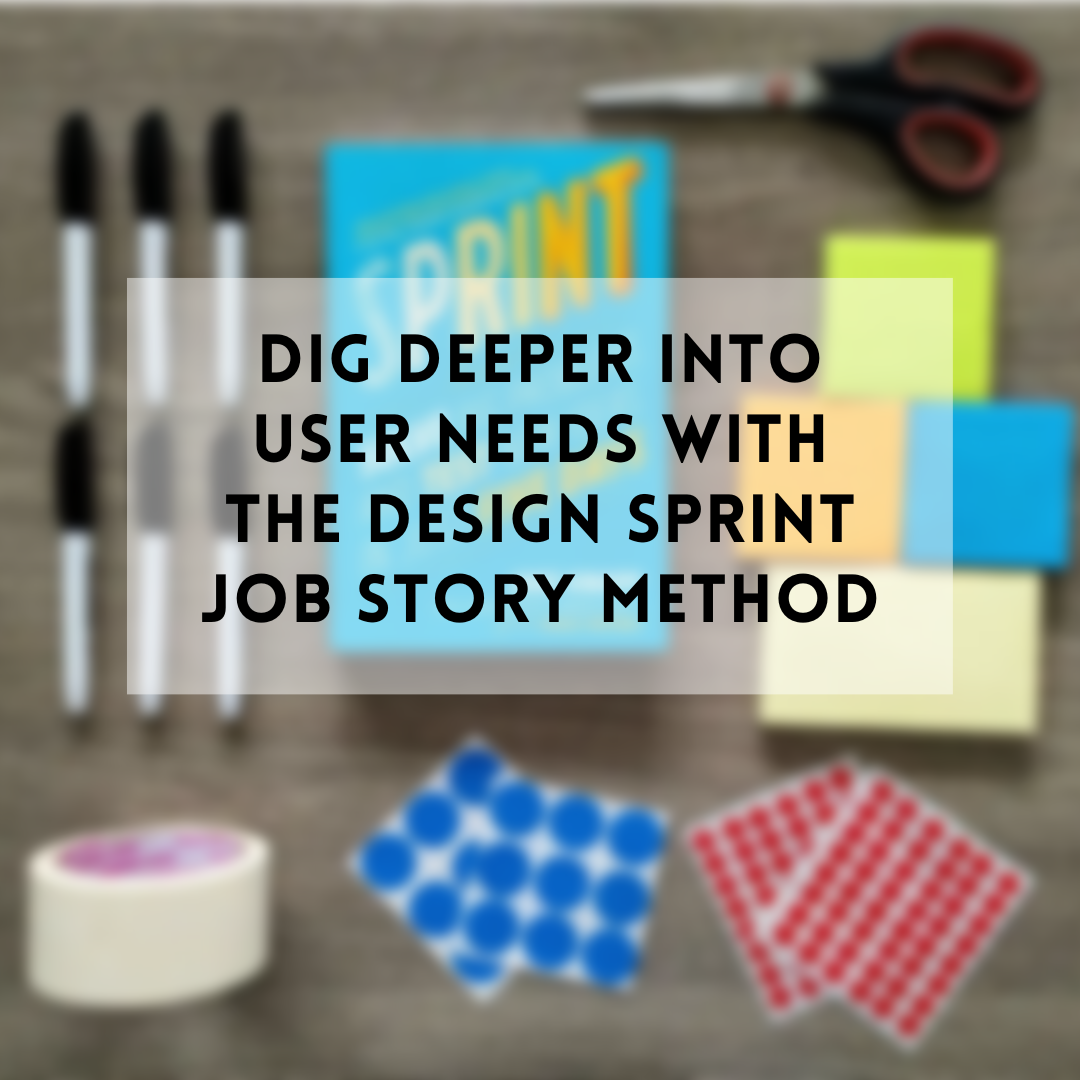Dig deeper into user needs with the Design Sprint Job Story method
I’ve used the Job Story method a dozen times as a part of my Design Sprints.
Here’s why:
The Job Story method takes the team deeper into the needs of the people we are solving a problem for. This means they are more likely to create a solution that meets those needs and as a result, make something people value.
Here’s how:
After mapping out the journey on the wall and picking your focus, take 20–30 minutes to dig into the needs of the person who you are focused on through using the Job Story method.
Orient to the person at the moment in time in their life (context) that has been chosen on your map.
I often cue this method up by describing a scenario based on what we know about the customer and moment. I ask team members to close their eyes during this portion and imagine themselves as the customer.
“Imagine you are Sarah and you are going to the library to return some books.* Your kids are with you and you’re scrambling to get everything together so that you can make it there and complete your return. What is it that you are feeling in this moment? What is it that you need? What might your concerns be as you leave the house?“
*Substitute your person and their context but you get the idea…
Have each team member spend 3–5 minutes writing out the job stories (one per post-it note) that they think are important to consider using this format:
I put this up on the big screen so that they can see it while they craft their stories.
Next, people share the stories they’ve written.
Have people gather around the whiteboard or a wall and share their stories. Stick the post-its up as you go. Allow for some dialog and color to be shared. Often, people share stories from their own lives, the lives of people they know, sometimes it’s all imagined based on what is known about the customer.
Sort and cluster them as you go. Prioritize. It may be obvious which needs are most important to keep top of mind when designing your solution. Sometimes it’s a matter of talking through.
If needed, hold a vote to help the team prioritize. Each person gets 3 dots to cast and then we see where the heat is. I cue it up like this:
“If you could help with meeting only 3 of her needs, which 3 would you pick?”
Here’s what it might look like to sort your stories out and find themes.
The stories stay up as we move into solution design.
When we create and hang our ideas up on the walls, I ask teams to refer back to the stories we defined to see if we’re making things to meet the needs we agreed were important or not. This is a great filter to use as teams votes on ideas throughout the Sprint.
Ok with imperfect:
Now — I know, the people in the room are most likely not the customer. But we are all human and when you ask people to put themselves into the customer’s shoes at that moment in time being solved for, team members uncover needs and motivations that they wouldn’t have if they hadn’t paused to imagine.


